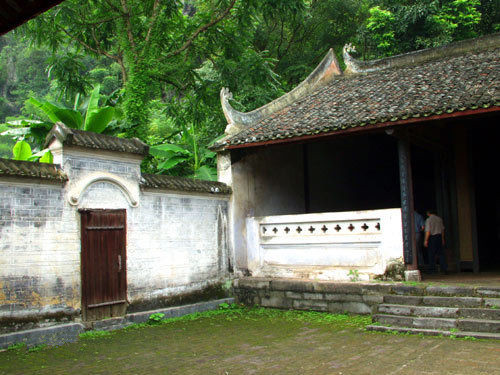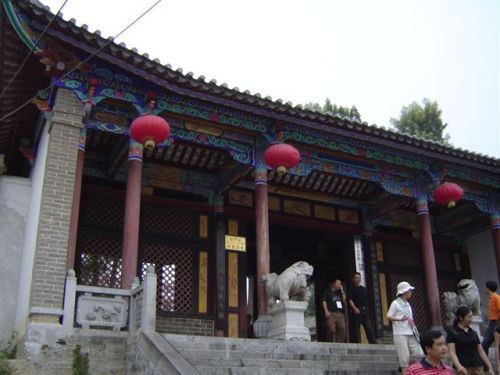
Nongshi Tusi Government Office in Guangnan County, Wenshan
Overview of Nongshi Tusi Government Office (侬氏土司衙署)
The Nongshi Tusi Government Office (侬氏土司衙署) is located within the First Elementary School in the city center of Guangnan County, Wenshan Zhuang and Miao Autonomous Prefecture (云南省文山壮族苗族自治州广南县城区第一小学). Established during the early Yuan Dynasty, it once housed several offices and official buildings. Covering an area of approximately 60 mu (around 40,000 square meters), it features traditional architectural styles from the Ming and Qing Dynasties. The government office’s position and layout reflect its importance as a center of local governance and its architectural grandeur signifies its historical significance.
In 2013, the site was designated as a National Key Cultural Relics Protection Unit (全国重点文物保护单位), affirming its importance in Chinese history and culture.
Historical Background
The Nongshi Tusi Government Office was originally established during the Yuan Dynasty (1275), with the founding of the Guangnan West Route Pacification Commission (广南西路宣抚司). It developed and flourished during the Yuan and Ming periods but began to decline during the Qing Dynasty. The Nong family held the hereditary tusi position for 673 years, governing the region across 28 generations, from the 12th year of the Yuan Dynasty (1275) until the end of the Republic of China (1948).
In 2020, the Guangnan County Government invested over 11 million yuan to restore and preserve the ancient buildings of the Nongshi Tusi Government Office.
Architectural Layout
The Nongshi Tusi Government Office covers an area of about 60 mu (roughly 40,000 square meters) and faces north to south. It is designed with typical Ming and Qing architectural characteristics. The office complex is built on four levels of stone steps, with a grand gate, a middle gate, and a third gate leading to the inner courtyard. Each level of the office is distinct and functional.
- Grand Gate (大门): At the front of the complex, the Grand Gate is guarded by two stone lions and features a drum pavilion to the left of the entrance. This is where petitioners could beat the drum to submit complaints. There are two rooms designated as prisons for holding criminals.
- Small Office Hall (小衙门殿): The Small Office Hall is one of the best-preserved buildings in the complex. It is built with a hipped roof and beam-lifted wooden structure, standing 9 meters tall, with a width of 14.3 meters and a depth of 21 meters. Supported by 42 large wooden pillars, this building demonstrates the grandeur of the ancient tusi’s government.
- Other Structures: The complex also includes a signing room and temporary office, as well as rooms on the east and west sides serving as study halls and meeting rooms. In the back courtyard, there is a Five Phoenix Tower (五凤楼) and the tusi’s living quarters. Unfortunately, due to historical changes, many of the original structures have been destroyed.
Historical and Cultural Significance
According to historical records, such as the Ming History (明史), Guangnan was known as Temo Road (特磨道) during the Song Dynasty. The tusi position of the Nong family was passed down over generations, with the office gaining prominence over the centuries. At its height, the government office complex was larger than the government office of Guangnan Prefecture during the Ming and Qing dynasties.
The Nongshi Tusi Government Office is considered a valuable cultural relic, exemplifying Ming and Qing architectural styles. Its historical, artistic, and scientific value is immense, offering a glimpse into the local governance and culture of ancient Guangnan.
Protection and Restoration
- In 1985, the Nongshi Tusi Government Office was declared a county-level cultural relic protection unit by the Guangnan County Government.
- In 2013, it was listed as part of the 7th batch of National Key Cultural Relics Protection Units by the State Council of the People’s Republic of China.
In 2020, efforts were made to restore and protect the historical complex, with a focus on maintaining its original style and structure.
Tourist Information
Location
The Nongshi Tusi Government Office is located inside the First Elementary School of Guangnan County (广南县城区第一小学), in the heart of Guangnan County, Wenshan Zhuang and Miao Autonomous Prefecture (云南省文山壮族苗族自治州广南县).
Address: 115 Beijie Street, Guangnan County (广南县北街115号)
Main Attractions
- Grand Gate (大门)
- Small Office Hall (小衙门殿)
- Five Phoenix Tower (五凤楼)
- Prison Cells (监狱)
How to Get There
Visitors can take local buses from within Guangnan County. Bus lines 1 and 2 stop at Lianhu Park Station (莲湖公园站), from which the site is easily accessible. For those arriving from outside the county, it is recommended to travel to Guangnan County first by long-distance bus or train from nearby cities in Wenshan Prefecture.
Travel Tips
- Best Time to Visit: The Nongshi Tusi Government Office can be visited year-round, but it is best to go during the spring or autumn when the weather is mild.
- Cultural Etiquette: As this site is part of a working school campus, visitors should be respectful of the environment and adhere to any visitor guidelines.
- Guided Tours: It is recommended to hire a local guide to gain deeper insight into the history and significance of the site.
- Local Dining: After visiting the government office, tourists can enjoy the local cuisine of Guangnan, including dishes that feature flavors of the Zhuang and Miao ethnic groups.
Explore more information and plan your visit by researching online, where several resources offer detailed descriptions and reviews of the Nongshi Tusi Government Office.



 7 Days GolfingTour
7 Days GolfingTour
 8 Days Group Tour
8 Days Group Tour
 8 Days Yunnan Tour
8 Days Yunnan Tour
 7 Days Shangri La Hiking
7 Days Shangri La Hiking
 11 Days Yunnan Tour
11 Days Yunnan Tour
 6 Days Yuanyang Terraces
6 Days Yuanyang Terraces
 11 Days Yunnan Tour
11 Days Yunnan Tour
 8 Days South Yunnan
8 Days South Yunnan
 7 Days Tea Tour
7 Days Tea Tour
 8 Days Muslim Tour
8 Days Muslim Tour
 12 Days Self-Driving
12 Days Self-Driving
 4 Days Haba Climbing
4 Days Haba Climbing
 Tiger Leaping Gorge
Tiger Leaping Gorge
 Stone Forest
Stone Forest
 Yunnan-Tibet
Yunnan-Tibet
 Hani Rice Terraces
Hani Rice Terraces
 Kunming
Kunming
 Lijiang
Lijiang
 Shangri-la
Shangri-la
 Dali
Dali
 XishuangBanna
XishuangBanna
 Honghe
Honghe
 Kunming
Kunming
 Lijiang
Lijiang
 Shangri-la
Shangri-la
 Yuanyang Rice Terraces
Yuanyang Rice Terraces
 Nujiang
Nujiang
 XishuangBanna
XishuangBanna
 Spring City Golf
Spring City Golf
 Snow Mountain Golf
Snow Mountain Golf
 Stone Mountain Golf
Stone Mountain Golf















